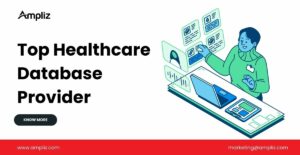Marketing to physicians is tough. But marketing to tech-savvy physicians? That’s even tougher!
These are professionals who’ve spent over a decade in training, keep up with emerging clinical research, and can spot a sales pitch a mile away. They’re not impressed by vague claims or marketing buzzwords.
But this doesn’t mean that every sales pitch is an attempt to scam someone or game the system. The medical field is evolving fast, and technology is a game-changer. After all, we already have AI-driven diagnostics, wearable health tech, and innovative therapies that prove there’s room for more.
So, if you’re transparent and direct, your pitch will reach the right ears. You just need to know how to approach these busy professionals with a fine nose for BS. In this article, we’ll break down several practical strategies to help you reach, engage, and convert tech-forward physicians without wasting a second of their time or yours.
1. Lead With Clinical Value
If your product description starts with “disruptive,” “next-gen,” or “revolutionary,” you risk losing our target’s attention the moment you open your mouth (or they open your email). These people are trained to scan for clinical relevance, and catchy buzzwords are not their cup of tea.
Tech-savvy doctors want to know how your solution improves patient care. Is it faster? More accurate? Proven in a clinical setting? Does it lower readmission rates or reduce treatment time? If the answers aren’t front and center, you’ve lost them.
Instead of going to a dermatologist and saying, “Our red light therapy device is groundbreaking,” say something like,
“A recent clinical study found that low-level laser light (which includes red light) therapy plays a role in stimulating, healing, and restoring affected skin.”
Make sure to link them to the study (after you make sure it’s legit) and you’ve got their attention. Once they’re hooked, you can pitch that red light therapy bed that can be used at home and ask them to recommend it to their patients.
2. Make It Fast, Flexible, and Frictionless
You’re talking to busy professionals who don’t have the time to sift through a 20-page PDF presentation.
The best way to catch their attention is to prioritize speed, clarity, and convenience. For this, break content into digestible formats (short videos, one-pagers, carousels, or infographics) and eliminate any unnecessary steps. No one has time for long forms or complex signups.
For instance, if you need a bulky whitepaper to prove your point, turn it into a 90-second animated explainer video. Or give a 10-slide webinar summary in a downloadable infographic.
Bonus Tip: If you feel physicians aren’t as eager to engage with your content as you’d expect, track click-through rates and drop-off points on your content. If they aren’t finishing what you’re sending, it’s time to simplify.
3. Use Smart Personalization
Behind the title or position in a clinic or hospital, there’s a specialist with unique interests and clinical challenges. The more your outreach reflects that, the better your chances of breaking through.
So why not use the power of hyper-personalization to get to know your audience a little better? Use the data at your disposal, like specialty, hospital affiliation, or clinical focus, to segment your audience and customize your messaging.
Let’s say you are trying to promote a product designed to help orthopedic surgeons and their patients. Instead of sending a generic email blast about your digital therapy platform, you can target orthopedic surgeons with messaging like:
“See how Dr. Chen uses our device to reduce ACL rehab time by 22% in her sports medicine practice.”
This makes the message precise, relevant, and respectful of the physician’s field, and it shows you’ve done your homework.
If you don’t know where to start, our healthcare intelligence platform can help you build healthcare professional segments based on specialty, geography, and tech adoption, so you’re not shouting into the void.
Bonus Tip: Resist the urge to cross the line and snoop on their personal social media. Or if you do, don’t let them know about it.
4. Use Peer Influence and Testimonials
People in the scientific community tend to trust their peers, especially when it comes to adopting new technologies or therapies.
Even if a physician is familiar with a recent healthcare technology, they’ll still want evidence that it works in real-world applications. And nothing builds trust faster than hearing, “This helped my patients, and here’s how I’m using it in my practice” from someone who walks in their shoes.
Let’s take an AI diagnostic tool that can detect heart anomalies earlier as an example. This type of smart tool is not new in the medical world, but it’s still not mainstream. So, the best way to convince your target audience is by featuring a respected cardiologist in a 2-minute video explaining how they use your AI diagnostic tool and how it’s changed their patient outcomes. Bonus points if your ambassador is active on LinkedIn or speaks at medical conferences.
Make sure to stick to real results and always back your claims with case studies, interviews, and physician-led webinars. These carry far more weight than polished brand videos.
5. Educate Your Audience
Just because they’re doctors, it doesn’t mean they can’t stand to learn a thing or two. In fact, it can be a great strategy to pique their attention.
Doctors and healthcare professionals, in general, are lifelong learners. Many are required to complete continuing medical education (CME) credits to maintain their licenses, and they genuinely want to stay ahead of the curve, especially when it comes to emerging tech that can improve outcomes or streamline workflows.
So, instead of going in for the hard sell, try making your product the subject of a learning opportunity.
To up the ante even more, find a way to provide educational information that helps participants earn CME credits. For example, you can organize a webinar where physicians learn how your red light therapy device supports healing and recovery in patients with muscle damage or high levels of inflammation.
If you find your target audience is motivated by this sort of content, you can take things further, with on-demand content, clinical guides, email series, or quick-tip videos that physicians can access at their own pace.
3 Common Mistakes to Avoid When Marketing to Physicians
Yes, you will make mistakes, especially if you’re not used to working with tech-savvy physicians. But if you take your time and employ your observation and people skills, everything should be fine in the end.
Still, it’s always better to learn from someone else’s mistakes, so here are the top three pitfalls to keep in mind in this niche.
You Don’t Address the Real Beneficiary
Tech-savvy doctors may appreciate innovation, but they still want to know how it helps patients (the real beneficiary). If you focus on listing product specs and forget to connect them to real clinical improvements, you may not get far in your communication.
You Don’t Know Your Audience
Physicians have windows when they’re more open to new information, like during medical conferences, between patient appointments, or while earning CME credits. They are also more willing to listen if your product or service comes highly recommended by a well-respected professional in the field.
No Follow-up Strategy
One-off emails or webinars don’t cut it. Tech-savvy physicians often need multiple touchpoints and a thoughtful drip of value before they’re ready to adopt something new. So, if you don’t have a strong follow-up strategy, you risk losing any momentum you might have built.
Wrap Up
Clever copy may work on regular customers, but tech-savvy physicians require clinical credibility, smart targeting, and real value. Speak their language, respect their time, and lead with outcomes. Do it right, and you’ll earn their trust and maybe even their recommendation.




